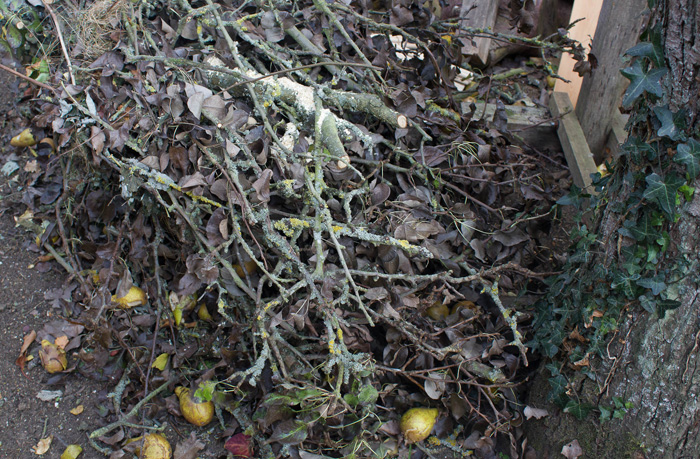Now’s the time to plant garlic. The year before last, my garlic was successful and my onions were not. This year is has been the other way round! They were both planted at the same time and treated in the same way but the results are different! It is interesting how success and failure are part of gardening life – it stops us from becoming too big headed, I suppose!
Garlic needs light soil, an open sunny site and can be planted from early October to late December. It is better to wait until spring on heavier soils, digging in grit, planting ridges or growing it temporarily in pots of loam based compost then transplanting outdoors, in spring. It needs chilling to produce decent sized bulbs – one to two months at least, from 0-10degC (32-50F) you can put them in the fridge for a while, just to make sure. (The fridge is a useful place to store seeds like Sorbus, or Magnolia which need a period of chilling to trigger germination, too.) When planting garlic, divide the cloves into individual sections. I once heard of someone planting the whole bulb and wondering why everything went horribly wrong! Make sure the ’blunt’ end is at the bottom and the tip is just below the soil, to discourage the birds from pulling them out. There are ‘hardneck’ and ‘softneck’ varieties, ‘hardneck’s’ are gourmet varieties with fewer larger cloves, but they don’t tend to store well, so most gardeners go for ‘softnecks’. This year I’m growing some new varieties from Sutton’s Seeds: fast growing ‘Sprint’, which should be ready by June and ‘Bella Italiano’ with a strong flavour, from just east of Rome. I wonder how it will fare in Hertfordshire? (I will also be trying their ‘Mikor’ shallots but they will not be planted until February).
It is also time to protect your pots. Lift them onto pot feet, wrapping them in hessian or bubble wrap to protect the pots and root-ball from winter cold. Plants can also be protected by putting them in a cool shed, at the base of a shelter wall, or buried in leaves under a hedge. Tender shrubs that are too large to move, should be wrapped in horticultural fleece before the first frosts; put open ended barn cloches over alpines and other cushion plants.

Finally, remember to build your bonfire for ‘Guy Fawkes’ night as late as possible to prevent hedgehogs and other small creatures from taking up residence, use the opportunity to burn any debris that doesn’t compost readily or diseased pruning’s – especially if you are in a smokeless zone, where bonfire’s aren’t normally allowed! Wood ash from the bonfire can be spread around fruiting trees – ornamental and edible- as it is a good source of potash. Younger wood contains higher levels than older boughs. When the ash has cooled, spread it as soon as possible, as it is difficult to move when wet. Damping it down once you have placed it round the trees, stops it from blowing away. Alternatively, mix the ash into your compost heap. Happy Gardening! Matt.


